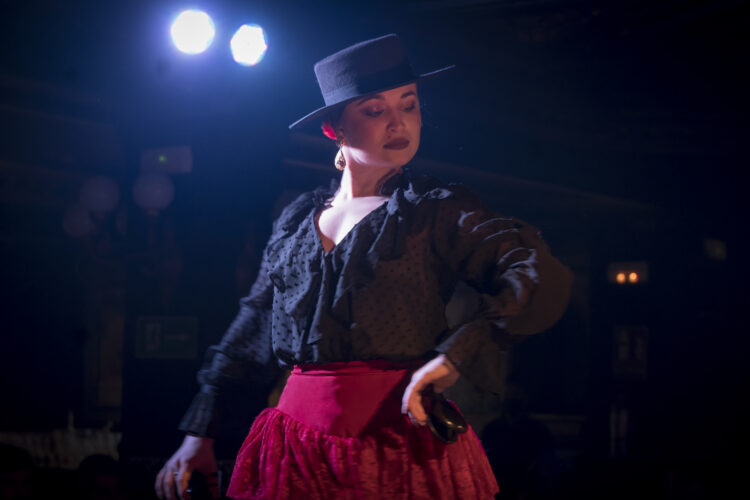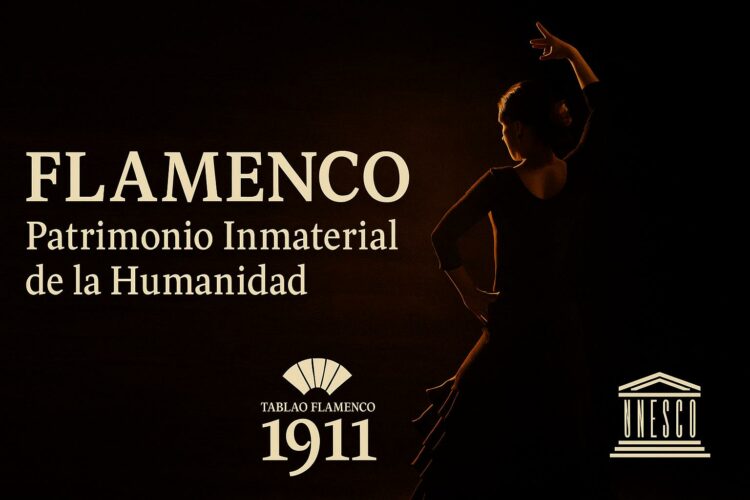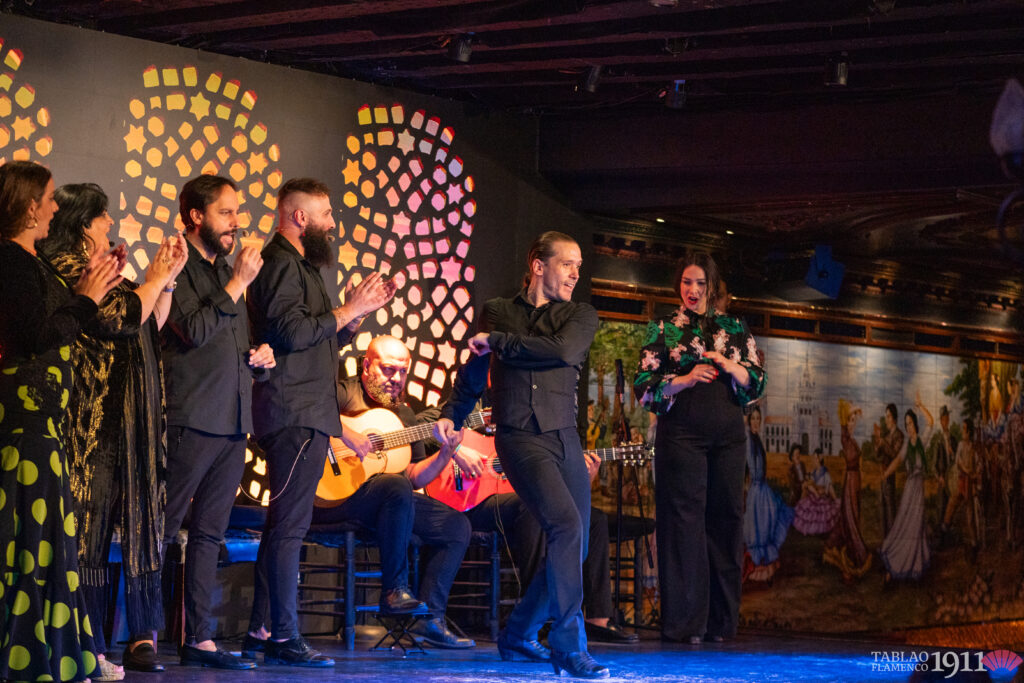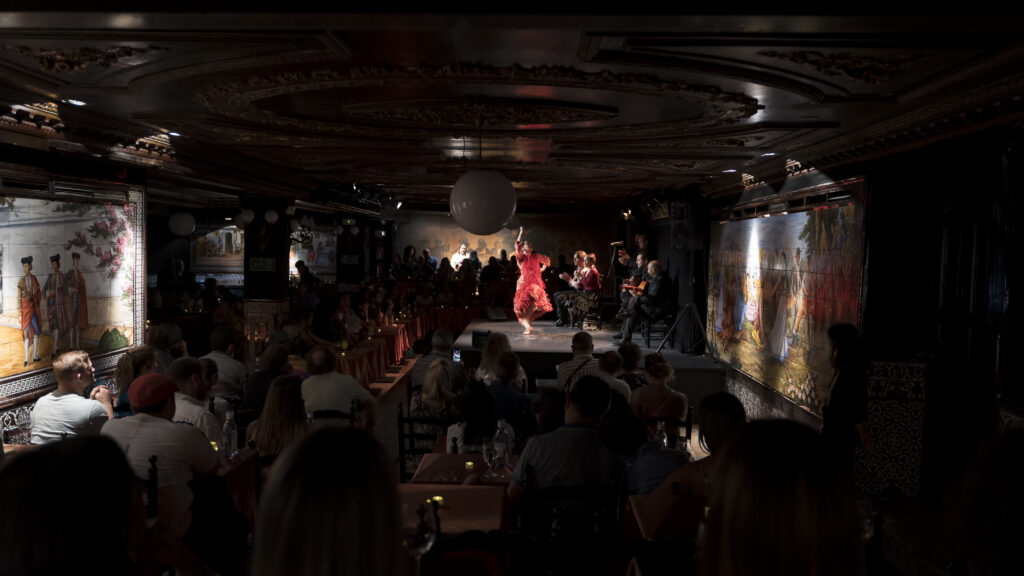
Laura Fúnez and the Escuela Bolera
Escuela Bolera, strength and elegance on stage.

November 16, 2010 is a date that flamenco proudly celebrates. It was the day UNESCO recognized it as Intangible Cultural Heritage of Humanity.
But the story of this art didn’t begin there. In places like Tablao Flamenco 1911, we’ve been its temple and home for over a century—long before official recognition.
Here are the 5 key reasons why this art is a universal treasure, and why experiencing it here is to travel to its most authentic roots.
Flamenco wasn’t invented in a palace. Its cradle was the patios and homes of Andalusia, where people who had no voice found it in the quejío and footwork.
It’s the DNA of the Roma people, blended with Andalusian, Arab, and Jewish spirit. An art born of necessity and resistance.
And this ability to turn pain into beauty is precisely one of the values UNESCO protects: culture as a refuge and the flag of a people.
Imagine a conversation where no one interrupts, but instead completes each other. That’s flamenco.
It’s not three separate arts—it’s a single language with three voices. The guitar (toque) lays down the path, the cante responds with a story from the soul,
and the baile expresses it all with the body—from the fingertips to the shoes that strike the ground.
That magical, spontaneous communion is what has echoed through our walls for over a century.

Close your eyes and listen to a soleá. You might not understand a single word, but you’ll feel everything. Flamenco gives you goosebumps without asking for permission.
It crosses borders because it doesn’t speak to reason, but directly to emotion. That universal connection, that famous “duende” that shows up unannounced,
is proof that this is a language that belongs to all of humanity.
Flamenco is not an old photo in a museum. It’s a living river. It’s the secret passed from grandparents to grandchildren, the technique a master teaches their student.
It’s a tradition that is respected, but never afraid to look forward. Legendary artists revolutionized it to make it greater,
and that evolution has played out on our stage—where tradition renews itself night after night.
A UNESCO title would mean nothing if the art didn’t live in the streets. Flamenco doesn’t exist without its people.
It’s the performers who give their all on stage, the artisans who lovingly build each guitar,
and of course, the audience that feels deeply and applauds. At Tablao Flamenco 1911, we are proud to have been the meeting place of this community for generations.

Understanding why flamenco is a world treasure is one thing. Feeling it in a place that has safeguarded it long before any official recognition is another.
At Tablao Flamenco 1911, we don’t just offer you a show—we invite you to take a seat in the living history of this art.
Reserve your seat and travel to the roots of a century-old art.